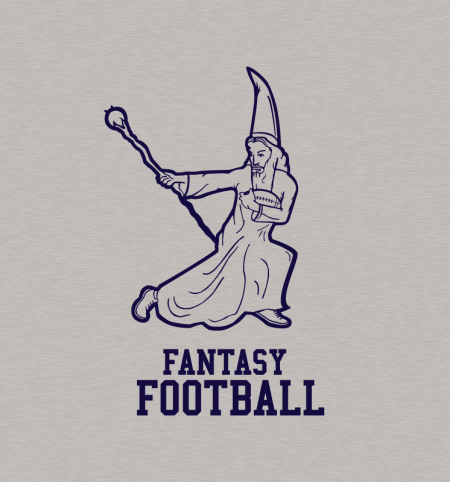Fantasy football combines elements of stock market speculation, role playing games, and casino gambling and throws them into the context of the NFL, far and away America’s most popular professional sport. Here, as simply as possible, is how it works.
The start of every September is the beginning of the NFL season. Each team plays sixteen regular season games over the next seventeen weeks. For a traditional football fan, the only thing that matters is what their team’s record is — how many wins and how many losses. A fantasy football fan cares about something different — how individual players perform. During each game, a company called the Elias Sports Bureau keeps official statistics for the NFL. These statistics transform each play into objective,[1] measurable data. For example, the famous helmet catch play from Super Bowl XLI would have been transformed into: Eli Manning +1 completion, +32 passing yards; David Tyree +1 reception, +32 receiving yards; Rodney Harrison +1 tackle.
These statistics have been used for all sorts of purposes in professional sports. Teams might use them to judge player performance, player contracts often have bonuses built in based on statistics. Leagues give out awards to players with the most goals or highest batting average. Player statistics have even been used in contract arbitration settings. Fantasy football looks at each game as a data set made up of the statistical translation of football plays and builds a different type of contest on top of them.
Real Football Game –> Statistics –> Fantasy Football Game
The fantasy football game that is built on top of the statistics generated by football is based on asking normal people to predict before the season begins and then again each week during the season which football players are going to generate better statistics.
Before the season begins the people in a fantasy football league (called owners) get together physically or virtually and pick NFL players to be on their fantasy teams. Fantasy leagues are usually made up of ten or twelve owners; because no NFL player can be picked by more than one team, the more people in a league the harder-core it is. In an eight player league, owners can probably thrive knowing only the star players. By the time you get to a sixteen or twenty person league, owners likely know the NFL rosters better than they know their own friends’ birthdays.
There are a variety of different ways to divvy up players before the season but the most common one is the snake draft. A draft order is set, usually randomly, and then owners take turns picking NFL players until their teams are full. It’s called a snake draft because the person who picks first the first time through picks last in the second round. The order is first-to-last, last-to-first, and repeat.
The fantasy football draft is the most important and exciting day of the fantasy season. If you are joining a fantasy league for the first time, we wrote some tips on how to enjoy and succeed on draft day here.
The predictions don’t stop after draft day. This is because the statistics generated by an owner’s set of NFL players don’t all count for their team each weekend. Instead, fantasy football asks owners to predict which of the real players on their imaginary team will perform the best in their real games each (real) weekend. Before the games begin, owners have to choose a “starting lineup” of players whose stats will count towards the fantasy team’s performance. Leagues vary quite a bit on how a starting lineup is structured, but this is a common form:
One Quarterback
Two Running Backs
Two Wide Receivers
One Tight End
One Kicker
One Team Defense[2]
In most fantasy football leagues there’s one more layer of abstraction on top of all of this. Each weekend two fantasy teams in the league will “play” each other. At the end of the weekend, whoever’s starting lineup has performed better wins. Like lineups, the way fantasy leagues translate football statistics into fantasy points varies from league to league. It’s also too complex to cover completely in this post but the standard basics go something like this:
One rushing or receiving touchdown = 6 points
One passing touchdown = 4 points
Ten rushing or receiving yards = 1 point
Twenty five passing yards = 1 point
Fantasy scoring systems are designed to create a compelling game so they don’t always match the realities of football. Amazing athletic plays don’t count for more than pedestrian plays. Quarterbacks are almost always the most important players on their real teams but not often on their fantasy teams.
Believe it or not, this all adds up to create an experience that millions of people find incredibly compelling. This is due in part to how having a fantasy team changes the way you watch football.[3] The main reason is that fantasy football is a big but knowable closed system. Results are based in part on luck but also on knowledge and skill. Owners feel like the effort they put into their teams has a real effect on their performance; and they get frequent and objective feedback about this each week. It simulates the joys and agonies of running your own business without most of the risk.

